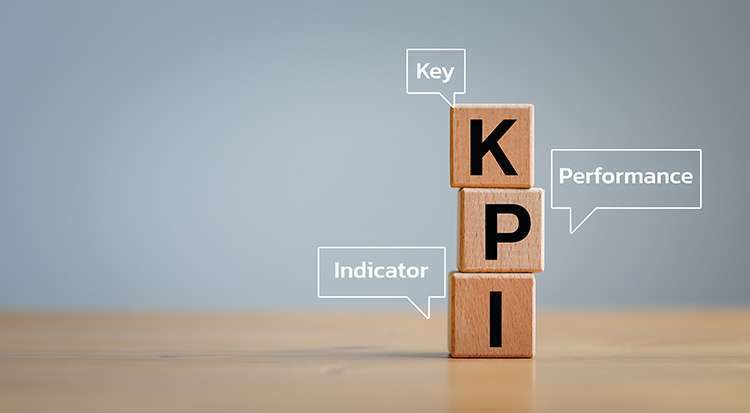-
Improve Supplier Relationships with Procurement KPI Tracking
Improve Supplier Relationships with Procurement KPI Tracking
With the current state of the economy, tracking and analyzing spend is more important than ever before. To accurately assess the whole procure-to-pay cycle, your company needs to identify Key Performance Indicators. Tracking these KPIs gives you insight into spend, letting you know if the company is performing well and hitting goals.
The exact KPIs you track depend on your individual company and situation. The most important KPIs to focus on may even change year to year. Even so, the most important KPIs fall into a few categories. While your company will want to identify and track unique KPIs, chances are many of those essential KPIs will fall into these five categories.

1) Cost Reduction and Avoidance
You can use KPIs in this category to track all the ways your company avoids spending extra money. This includes tracking savings, cost reductions, and cost avoidance.
For savings, compare data between years and/or months to track savings as a percentage. Tracking this KPI can help you identify ways to reduce the cost of necessary purchases. Similarly, tracking cost reduction can help your company identify ways to cut costs. Cutting redundant or unneeded goods and services can dramatically improve spend management.
Cost avoidance is a little bit different. This involves ways to avoid unnecessary expenses. For example, you can track materials that can expire to ensure that no one orders too much to use up before the expiration date. It also includes steps taken to avoid unnecessary damages that would result in repair or replacement.
2) Non-Compliant Spending
Your company will need some way of tracking non-compliant or “maverick” spending. Whenever an employee goes around the established procurement process, your company is missing out on important data and likely losing money. It can also damage relationships with suppliers if someone in the company is breaking contracts by purchasing from someone else without the procurement department’s approval.
Tracking maverick spending is a KPI that gives your company greater control over purchasing. When you’re tracking maverick spend, you can more easily monitor efforts to reduce noncompliant spending. While your company might determine a certain percentage of maverick spend is acceptable, in general, you’ll want to get it as low as possible.
3) Spend Under Management
Spend under management (SUM) is a KPI that tracks all aspects of spend that the procurement department is managing. It’s pretty much the opposite of maverick spend. With KPIs in this category, you’ll be tracking purchases handled by the procurement department, whether the procure-to-pay process goes as planned, and where the money goes.
A related KPI that you might track is contribution to total spend. This involves tracking exactly where the money is going. It involves tracking spend categories, suppliers, and individual items. Tracking this KPI helps your company identify which items and categories of items are purchased most regularly, and which suppliers you use most. You may be able to leverage this data to negotiate profitable contracts with suppliers.

4) Compliance and Variation
KPIs in this category measure compliance with contracts and policies as well as deviations from expectations. It’s important to measure KPIs including contract compliance (on your side and the supplier side) and policy compliance to ensure that your procurement department is working as intended. You might also measure how easy it is for employees to comply with policies and how well the policies are working.
You’ll also probably want to establish a KPI related to purchase price variance. Often, this will be connected with contracts, but not always. This involves tracking price fluctuations, and changes between the price you expected to pay and what you actually pay. This type of discrepancy may be a result of outdated pricing information, supply and demand fluctuations, unclear contracts, or other factors. Tracking price variations helps your company anticipate and respond to changes between expected and actual costs.
5) Supplier Management
It’s essential that you have a way of managing suppliers. There are several KPIs you can track in this category to help you monitor supplier performance, maintain a sustainable supply chain, and more.
One KPI your company might track is the percentage of orders from each supplier. One rule you might hear is the 80/20 rule, which advises that 80% of your purchases should go through 20% of your suppliers. Generally, it’s easier to manage a small number of suppliers but with post-pandemic supply chain disruptions, it’s also a good idea to have backups. Tracking KPIs related to suppliers can help you maintain a reliable supply chain.
You can also track KPIs related to supplier performance. If you’re tracking contract compliance, price variation, late orders, offered discounts, and other metrics related to supplier performance it will be easier to identify which suppliers to focus on when negotiating and renewing contracts.
Automation Makes Tracking KPIs Easier
Business process automation (BPA) software makes it much easier to track KPIs. Companies often struggle to achieve visibility into their supply chain and procurement process. With low visibility, it’s difficult to track KPIs because there’s a lack of transparency regarding procurement. Unless you can see how procurement works and collect relevant data, you’ll have a hard time even deciding which KPIs to track.
Implementing quality BPA software improves visibility into procurement. The software system makes it much easier to track and manage procurement. It automatically collects data related to procurement and makes that data easily available. You’ll have far more control over and insight into the procurement process. This makes it much easier to identify and track Key Performance Indicators.
With NextProcess software, you’ll get user-friendly software that enables your company to easily manage procurement from one centralized software platform. You can customize our system to automatically enforce company policy, and use it to track the KPIs your company decides to focus on. You can even automate the entire procure-to-pay process by linking our software modules for a true end-to-end financial solution. Contact us today to set up a free demo and see how you can optimize procurement.